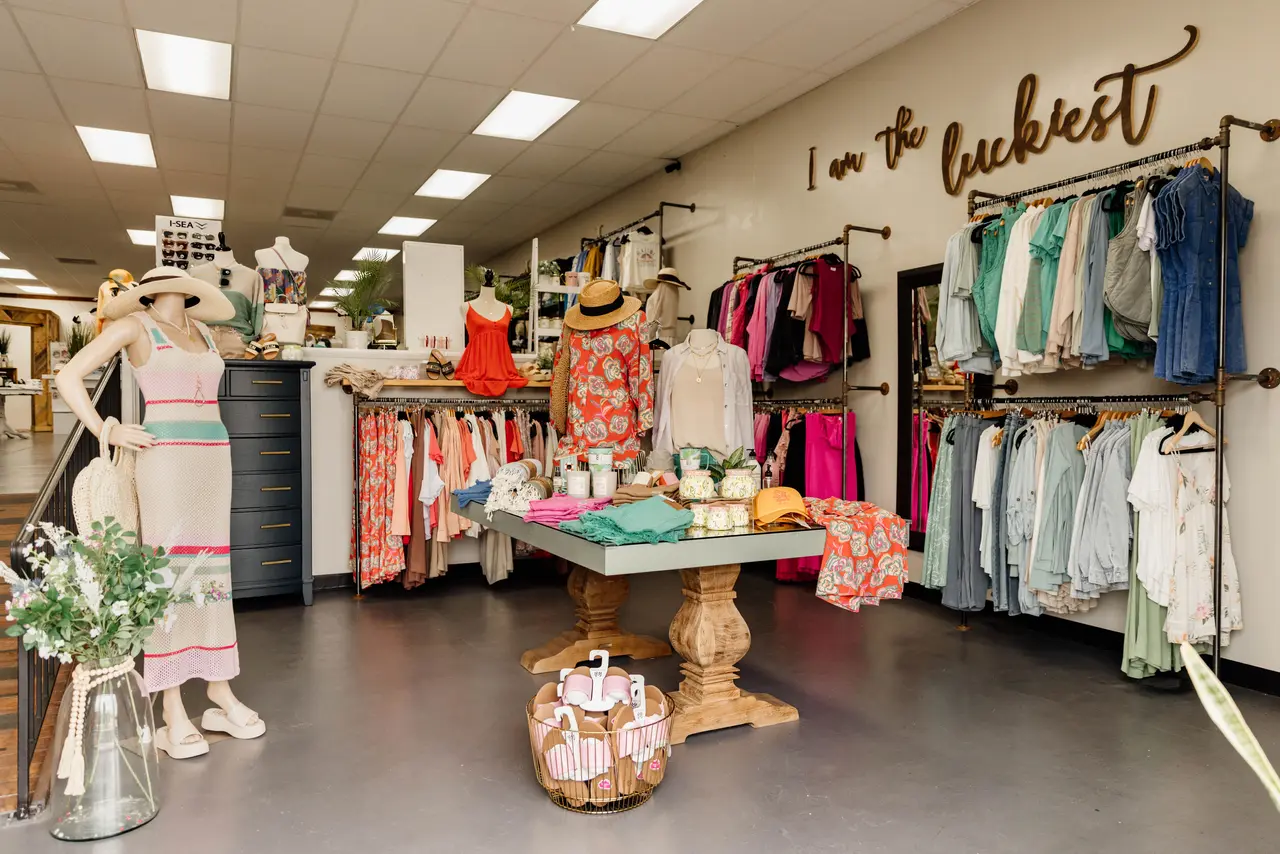Exploring the World of Lasting Boutique Fashion Brands
Exploring the World of Lasting Boutique Fashion Brands
Blog Article
Sustainable Fashion: Just How Eco-Friendly Clothes Is Shaping the Future of Style
As the style sector deals with increasing examination over its ecological influence, the surge of sustainable fashion offers an encouraging choice that lines up design with ecological duty. boutique fashion. Just how does this motion truly influence the future trajectory of fashion, and what obstacles lie ahead in its prevalent fostering?
Cutting-edge Sustainable Materials
As the garment industry grapples with its environmental influence, ingenious sustainable products have actually arised as a vital service for lowering environmental impacts. Amongst the most appealing materials are those originated from all-natural, sustainable resources, such as organic cotton, hemp, and bamboo. These products not only decrease dependence on nonrenewable fuel sources but likewise minimize dangerous pesticide use and water consumption. Organic cotton, for circumstances, uses significantly much less water than conventional cotton and gets rid of the need for harmful chemicals, therefore protecting dirt health and biodiversity.
In addition to plant-based materials, advancements in biofabrication have actually caused the growth of lab-grown fabrics. Mycelium natural leather, originated from mushroom origins, presents a versatile and naturally degradable option to pet natural leather. Its manufacturing causes substantially lower carbon emissions and water use, making it an extra lasting choice for fashion developers seeking to line up with environmentally friendly methods.
Recycled products are additionally obtaining grip, with polyester made from recycled plastic containers representing a substantial advancement. This development not only draws away plastic waste from seas and landfills yet likewise decreases energy intake contrasted to creating virgin polyester. Together, these products highlight the capacity for a much more sustainable garment industry, leading the way for eco mindful design and manufacturing.
Eco-Conscious Production
Structure on the technologies in lasting materials, the fashion business is additionally re-evaluating its production processes to further lower environmental impact. Trick techniques consist of decreasing water consumption, lowering carbon discharges, and eliminating harmful chemicals. By adopting closed-loop systems, manufacturers intend to recycle water and power effectively, significantly reducing waste. The assimilation of renewable resource sources, such as solar and wind power, right into production facilities better reduces dependence on nonrenewable fuel sources.
Another important aspect is the reduction of toxic chemicals commonly used in dyeing and completing fabrics. Eco-conscious suppliers are changing towards plant-based dyes and waterless dyeing innovations, which not just guard neighborhood ecosystems but also enhance worker safety and security. Developments like digital printing reduce fabric waste and energy consumption, offering a cleaner option to typical techniques.
With the advancement of blockchain technology, companies can currently supply comprehensive understandings into their supply chains, making certain eco pleasant and honest practices at each action. As the demand for eco-conscious products expands, suppliers are forced to innovate, making certain that the future of fashion is both sustainable and fashionable.
The Increase of Upcycling
Upcycling, a transformative practice in sustainable style, includes artistically repurposing disposed of products into brand-new, top notch products. This cutting-edge method not only lowers waste however also reduces the demand for resources, consequently reducing the ecological impact of apparel production. By rebuilding and reimagining existing items, designers and style brand names have the ability to infuse creativity right into their collections while promoting ecological responsibility.

In addition, the upcycling activity has encouraged tiny businesses and independent developers, who frequently lead in innovation as a result of their dexterity and imagination. By utilizing on the plentiful accessibility of unused products, these entities add to a round economic situation, demonstrating that fashion can be both sustainable and fashionable. With upcycling, the market takes significant strides in the direction of a much more responsible and aware future.
Thrift Culture's Impact
The expanding thrift culture significantly reshapes the landscape of sustainable style, emphasizing the importance of conscious usage. This social shift urges consumers to accept secondhand apparel, thus reducing the demand for new garment manufacturing and minimizing environmental impact. Thrift buying not just expands the lifecycle of clothes but also anonymous reduces the carbon footprint linked with manufacturing, transferring, and getting rid of clothing.
A crucial aspect of second hand society is its democratization of fashion. By using a large array of styles from numerous eras at budget friendly rates, second hand shops make fashion easily accessible to a broader audience. This accessibility cultivates a feeling of individuality and imagination, as customers mix and suit distinct items to curate personalized wardrobes without contributing to the quick style cycle.
In addition, second hand society promotes circularity in fashion, lining up with the concepts of a round economic situation. As even more designers and customers welcome second hand society, the style market is urged to adjust, incorporating lasting methods to meet the growing need for eco-conscious choices.

Future Trends in vogue
Fashion's advancement is increasingly shaped by technical innovations and sustainability-driven efforts. One prominent pattern is the increase of electronic style, where digital garments can be put on in enhanced truth atmospheres, dramatically minimizing textile waste.
Moreover, the combination of blockchain innovation provides brand-new opportunities in openness and traceability, permitting customers to verify the sustainability credentials of their garments. boutique fashion. This makes certain accountability in supply chains and promotes ethical sourcing practices. 3D printing is yet an additional advancement that assures to change making procedures by making it possible for on-demand manufacturing, thereby decreasing excess inventory and waste
As these technologies grow, they are positioned to change the fashion landscape, merging design with sustainability. The future of fashion, for that reason, lies in a seamless mix of innovation, innovation, and eco-friendly duty.
Final Thought
The improvement of the apparel industry with sustainable methods suggests a pivotal shift in the direction of environmental accountability. The integration of innovative products, eco-conscious manufacturing strategies, and the embracement of upcycling and second hand culture emphasizes a commitment to reducing eco-friendly footprints. As these techniques get momentum, they check that redefine the industry's story by prioritizing moral and sustainable selections. This development not only lines up fashion with environmental sustainability yet likewise establishes a precedent for future fads focused on duty and development.
As the style market encounters boosting analysis over its environmental influence, the rise of sustainable style supplies a promising option that aligns style with ecological obligation.As the style sector grapples with its ecological effect, innovative sustainable products have actually arised as a crucial option for lowering environmental footprints. With each other, these useful content products highlight the possibility for an extra lasting style sector, leading the means for environmentally conscious style and production.
Building on the advancements in sustainable materials, the fashion industry is additionally re-evaluating its production procedures to better minimize environmental influence. boutique fashion.Upcycling, a transformative practice in lasting style, entails artistically repurposing thrown out products right into brand-new, top notch items
Report this page